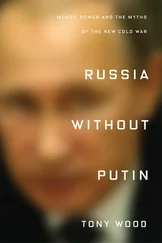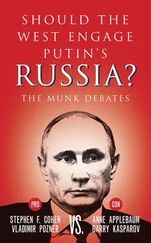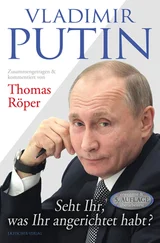Dresden’s out-of-the-wayness offered other advantages to Markus Wolf, who said that intelligence work was “very boring … a banal trade of sifting through huge amounts of random information in a search for a single, enlightening gem or illuminating link, so I varied my routine by insisting on running ten or twelve agents personally. As far as I know I was the only chief of any of the world’s principal intelligence agencies to do so. This gave me the opportunity to get out and meet them from time to time in safe houses in the Berlin suburbs or—what I preferred—in Dresden and other places where there were fewer Westerners.” [96] Wolf, Man Without a Face , p. 110.
Dresden was also the home base of the twentieth century’s greatest atomic spy, Klaus Fuchs, who settled there in 1959 after serving nine years in a British prison for passing secrets to the Soviets. For many years Fuchs was deputy director of the Institute for Nuclear Research just outside Dresden, and Wolf would confer with him on scientific and technical questions.
“Blond, athletic, simpatico,” [97] Usoltsev, Sosluzhivets , p. 62.
as one colleague described him, Putin arrived in Dresden in late summer 1985 just as the USSR’s new leader, Mikhail Gorbachev, was launching his brilliant, doomed career. Putin would be in Dresden for nearly all the Gorbachev years; for him glasnost and perestroika would always be more echo than experience.
Putin was not only assigned to Dresden, he was requested by Dresden. A section chief about to be rotated home who knew Putin from Leningrad had seen his name on a list of recent Red Banner Institute graduates and politicked for his assignment to Dresden.
Putin worked out of a two-story building at 4 Angelikastrasse directly across the street from Stasi headquarters. The KGB and the Stasi worked very closely together, too closely sometimes for the young, ambitious General Horst Böhm, head of the Dresden Stasi, who jockeyed for more leeway from their ally and conqueror, who had full rights to act as they would in the USSR with the one exception of not being able to arrest East German citizens. General Böhm would become especially incensed when KGB officers like Putin would poach ex-Stasi who were still being used by the Stasi.
Putin, for his part, was a bit shocked by East Germany, which he called “a harshly totalitarian country, similar to the Soviet Union, only 30 years earlier.” [98] Putin, First Person , p. 77.
Simon Wiesenthal, renowned Nazi hunter, said that when it came to their own citizens, the Stasi were “worse than the Gestapo.” [99] Koehler, Stasi , p. 8.
The entire society was infested with agents and informers. According to very rough estimates, the USSR had 1 agent per 6,000 people, the Gestapo, 1 per 2,000, and the Stasi 1 per 166, which, if informers and part-time informers were included, came to something like 1 per 6.5, meaning it was statistically impossible to have a dinner party without at least one person being an informer. [100] Ibid., p. 9.
Wiesenthal goes on to say of the Stasi: “They not only terrorized their own people worse than the Gestapo, but the government was the most anti-Semitic and anti-Israel of the entire Eastern Bloc. They did nothing to help the West in tracking down Nazi criminals, they ignored all requests from West German judicial authorities for assistance. We have just discovered shelves of files on Nazis stretching over four miles. Now we also know how the Stasi used those files. They blackmailed Nazi criminals who fled abroad after the war into spying for them.” [101] Ibid., p. 27.
Unlike in Leningrad, where he may have been involved in suppressing dissent in addition to counterintelligence, there is little question what Putin’s assignment was in Dresden. He was in Directorate S, illegal intelligence, which, among its many tasks, prepared agents to penetrate the enemy with forged documents. According to Major Vladimir Kuzichkin, author of Inside the KGB , who worked in Directorate S himself, an illegal was “a Soviet citizen, a KGB officer holding military rank, who has undergone special training and who has been documented as a citizen of a foreign country.” By contrast an illegal agent “can either be a Soviet citizen or a foreigner. He is not a KGB officer, he does not hold illegal rank, and has been brought into intelligence to do a onetime operation.” [102] Kuzichkin, Inside the KGB , p. 82.
Illegals could remain undercover for decades.
One of Putin’s tasks was to find and screen candidates to be illegal agents, knowing it unlikely that many of them would qualify. Putin describes his work in the bland and general terms designed to reveal nothing: “The work was political intelligence—obtaining information about political figures and the plans of the potential opponent…. We were interested in any information about the ‘main opponent, NATO.’ … So recruitment of sources, procurement of information, and assessment and analysis were big parts of the job. It was very routine work.” [103] Putin, First Person, p. 69.
Though Putin himself put a bland gloss on it, he was working in the part of foreign intelligence, Directorate S, that was the place where there might be a touch of action and danger, the only place that was even remotely Bondish, as one of Putin’s colleagues would put it.
Directorate S had a special status both because of the successes it could achieve and the dangers it posed to Soviet foreign policy. As Christopher Andrew and Vasily Mitrokhnin write in The Sword and the Shield : “The records of Directorate S revealed some remarkable individual achievements. KGB illegals successfully established bogus identities as foreign nationals in a great variety of professions ranging from Costa Rican ambassador to piano tuner to the governor of New York.” [104] Andrew and Mitrokhin, The Sword and the Shield , pp. 8–9.
But it was a high-risk game Putin was playing. KGB major Kuzichkin writes of the difference between espionage performed by members of the diplomatic staff and that carried out by illegals using forged passports of the host nation. The former have diplomatic immunity, whereas “if a KGB mission abroad should misfire and a political scandal ensue, intelligence officers can expect no mercy from the Politburo…. At best, a culprit may be thrown out of the KGB without a pension. At worst, criminal proceedings may be instituted against him.” [105] Kuzichkin, Inside the KGB , pp. 86–87.
Though Putin was adept at covering his own tracks and though most of the Dresden KGB’s records were burned in the final days of East Germany, a bit is known about one major operation in which Putin was involved. If NATO was the “main enemy,” the “main worry” was a Sudden Nuclear Missile Attack (SNMA) that would begin with Green Berets operating behind Soviet lines to thwart a Soviet response. It turns out that this at least was hardly extravagant Soviet paranoia. A May 2, 2015, New York Times article, “A Secret Warrior Leaves the Pentagon as Quietly as He Entered,” on the retirement of Michael G. Vickers, undersecretary of defense for intelligence, states: “During the Cold War, Mr. Vickers was a member of the Green Berets assigned to infiltrate Warsaw Pact borders should World War III break out. His mission: Detonate a portable nuclear bomb to blunt an attack by the overwhelming numbers of Soviet tanks.” [106] Thom Shanker, “A Secret Warrior Leaves the Pentagon as Quietly as He Entered,” New York Times , May 1, 2015.
There were three Green Beret bases in West Germany, and it was the ambition of Directorate S to penetrate those bases. Putin was involved in searching through “mountains” of invitations from Dresdeners to relatives in West Germany to find any to people who lived near those bases. In any case, it all came to naught, not a single nibble worth mentioning. But success was always rare in any such operation. As one of Putin’s coworkers put it, to recruit a single Western agent was success enough for a career.
Читать дальше
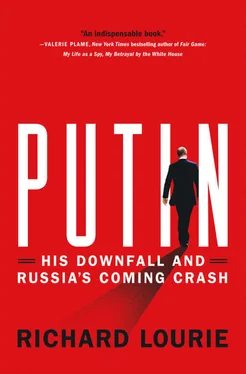

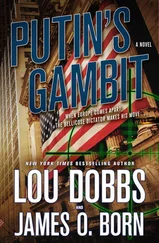
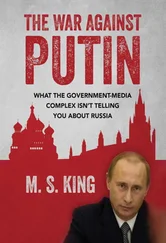

![Stephan Orth - Behind Putin's Curtain - Friendships and Misadventures Inside Russia [aka Couchsurfing in Russia]](/books/415210/stephan-orth-behind-putin-s-curtain-friendships-a-thumb.webp)
